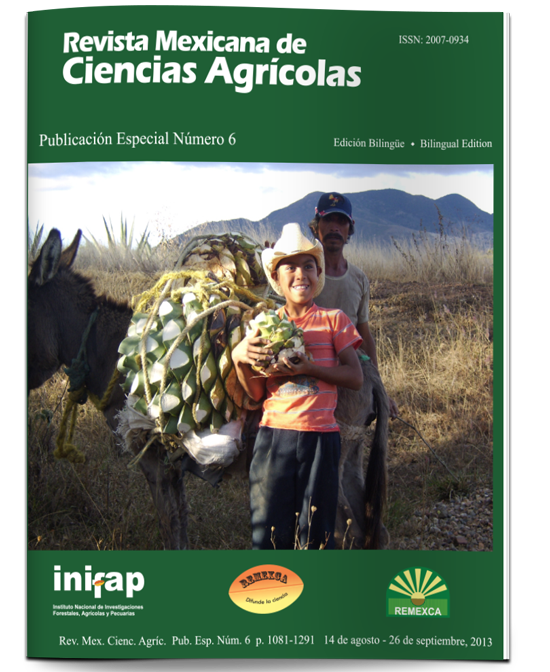Aboveground biomass expansion factors for Pinus chiapensis (Mart.) Andresen
DOI:
https://doi.org/10.29312/remexca.v0i6.1290Keywords:
regression models, destructive sampling, specific gravityAbstract
The biomass expansion factors (BEF) allow estimating the amount of biomass set per tree based on inventory variables; useful information for climate change projects. The objective was to estimate BEF variables per tree, through the generation of regression models for volume and aboveground biomass in Pinus chiapensis (Mart.) Andresen, in a community in the northern highlands of Oaxaca. Destructive sampling of 70 trees was made during 2012, randomly selecting individuals in proportion to the diametric frequency. The stem was cubed by the overlapping bolt method. The volume of wood with bark was transformed to biomass by the specific gravity and for the rest of the aboveground component were used conversion factors of biomass (dry weight / fresh weight). Nonlinear models of total volume and trade volume with and without bark and total aboveground biomass were obtained. Allometric variables were used from inventory like normal diameter (ND, cm) and total height (TH, m). For the elaboration of volumetric rates, adjusted models showed determination coefficients between 0.94 and 0.98. The Schumacher-Hall model showed the best fit for total aboveground biomass R2= 0.95, using the same independent variables from volume. The BEF was obtained by the quotient of the model from biomass and total tree volume with bark (BEFvtcc= 1040.771 x ND0.15073 x TH-0.42946). With this equation, it is possible to estimate reliably, the total aboveground biomass (kg) in trees of Pinus chiapensis from of inventory variables or volume.
Downloads
Downloads
Published
How to Cite
Issue
Section
License
The authors who publish in Revista Mexicana de Ciencias Agrícolas accept the following conditions:
In accordance with copyright laws, Revista Mexicana de Ciencias Agrícolas recognizes and respects the authors’ moral right and ownership of property rights which will be transferred to the journal for dissemination in open access. Invariably, all the authors have to sign a letter of transfer of property rights and of originality of the article to Instituto Nacional de Investigaciones Forestales, Agrícolas y Pecuarias (INIFAP) [National Institute of Forestry, Agricultural and Livestock Research]. The author(s) must pay a fee for the reception of articles before proceeding to editorial review.
All the texts published by Revista Mexicana de Ciencias Agrícolas —with no exception— are distributed under a Creative Commons License Attribution-NonCommercial 4.0 International (CC BY-NC 4.0), which allows third parties to use the publication as long as the work’s authorship and its first publication in this journal are mentioned.
The author(s) can enter into independent and additional contractual agreements for the nonexclusive distribution of the version of the article published in Revista Mexicana de Ciencias Agrícolas (for example include it into an institutional repository or publish it in a book) as long as it is clearly and explicitly indicated that the work was published for the first time in Revista Mexicana de Ciencias Agrícolas.
For all the above, the authors shall send the Letter-transfer of Property Rights for the first publication duly filled in and signed by the author(s). This form must be sent as a PDF file to: revista_atm@yahoo.com.mx; cienciasagricola@inifap.gob.mx; remexca2017@gmail.
This work is licensed under a Creative Commons Attribution-Noncommercial 4.0 International license.



